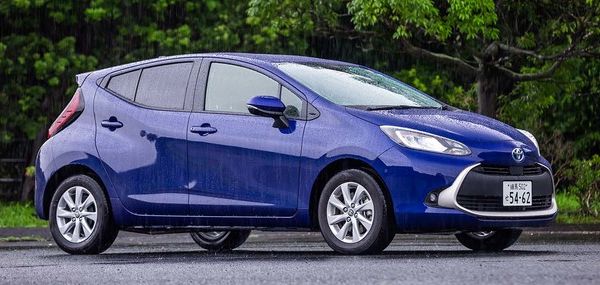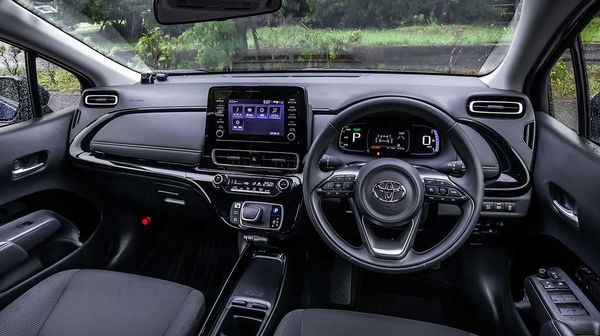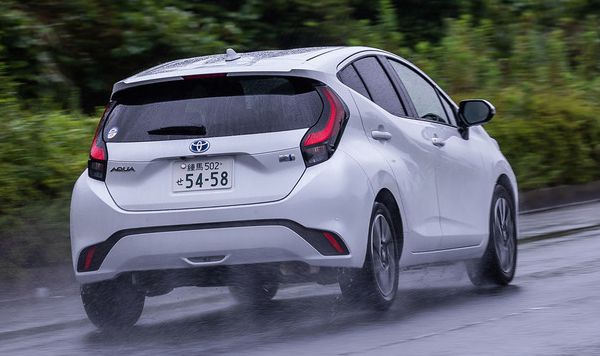Published
on 6
Oct 2021
|
All rights reserved.
|
|
|

|
|
Now
no longer the fuel economy champion, what is the selling point of Aqua?
|
|
The last generation Aqua,
or Prius C in North America, was a dedicated hybrid car aimed at
extending the success of Prius to compact car segment. In the
beginning, it was quite a hit, capturing 270,000 sales in Japan alone
in its first full year of sale and topping the domestic sales chart
from 2013 to 2015. However, that strength lasted not too long.
Competition from Nissan Note e-Power, Honda Fit Hybrid and Toyota’s own
Vitz Hybrid ate into its market share. Meanwhile, low fuel price hurts
its attraction in overseas market. Eventually, some 1.87 million cars
were built in an unusually long, 9.5 years lifespan, which is not
particularly successful by Toyota’s standard.
For the second generation, Toyota decided to keep its sales bounded in
Japan. Ambition has been scaled back as well. It is an evolution of the
old car, aiming to keep existing customers without expanding to new
kinds of buyers, especially younger ones. The exterior styling has been
updated, but not quite as radical and sporty as the new Yaris. Built on
the TNGA GA-B platform, it is stiffer than the old car. To distance
itself from Yaris, both its length and wheelbase have been stretched by
50mm, though it remains the size of a typical B-segment car. Suspension
is naturally struts up front and a torsion beam at the rear, the latter
is replaced by a double-wishbone setup on 4WD model. BTW, the 4WD gets
a rear electric motor with only 6.4hp.

|
|
Wheelbase
is stretched by 50mm, distancing it further from Yaris.
|
|
Inside, the new dashboard doesn’t look as cheap and boring as the last
one. Still, it is not one of the best built interiors in the class,
blame to using hard plastics all round and the dark monotone color. The
instrument is now digital, and you get either a 7in or 10.5in
touchscreen on the center console, while some useful physical switches
are retained. The longer wheelbase affords 20mm more legroom at the
rear, while the cabin is claimed to be 30mm wider. It is more adequate
to take a small family than the Yaris.
The powertrain is again a 1.5-liter engine mated with 2-motor hybrid
system, but both have been improved. While the old car ran an
Atkinson-cycle 4-cylinder, the new one is a 3-cylinder coming from the
“Dynamic Force” family with significantly more power: 91hp instead of
74hp. Meanwhile, the propulsion motor generates 80hp instead of the
previous 61hp. Combined output is 116hp, up from 100hp. In addition, it
adopts a new, “bipolar” type of NiMH battery, whose electrodes have
anode on one side and cathode on another side. This increases surface
area, lowering resistance and improving power. As it is also more
space-saving, more cells can be packed into the same volume. Overall,
Toyota claims the bipolar NiMH battery offers double the power output,
although its unspecified capacity is believed to be more or less the
same as before.
As a result, the new Aqua can use electric power in more situations. EV
mode can drive the car up to 40km/h (25mph) instead of the previous
15km/h (9mph). This helps it to improve refinement as well as cutting
fuel consumption. Performance is improved, too. Expect 0-60 mph to take
less than 9.5 seconds, a second quicker than before.
 |
|
It
seems that Toyota intends to use Yaris to lure younger drivers, leaving
those not interested in driving to the Aqua.
|
|
Toyota has wealth of experience in hybrid technology, so it is not
surprising to find out it blends the two power sources seamlessly with
high refinement. The chase for smoothness explains why it does not use
regenerative braking as strong as some rivals. Even in the strongest
Power+ mode, the regenerative braking force is not strong enough to do
one-pedal driving.
Likewise, the car chases comfort at the expense of control. Its
suspension setting biases strongly towards comfort, more so than the
first generation. It is safe and easy to live with, but loose body
control, light steering and lack of feel fail to deliver any driving
excitement. It seems that Toyota intends to use Yaris to lure younger
drivers, leaving those not interested in driving to the Aqua. The fact
that it is no longer on sale in overseas market makes this decision
easier.
Problem is, the new Yaris Hybrid runs the same hybrid powertrain and,
for the first time, beats Aqua in fuel economy. Now no longer a fuel
economy champion, what is the selling point of Aqua?
|
Verdict:   |
|